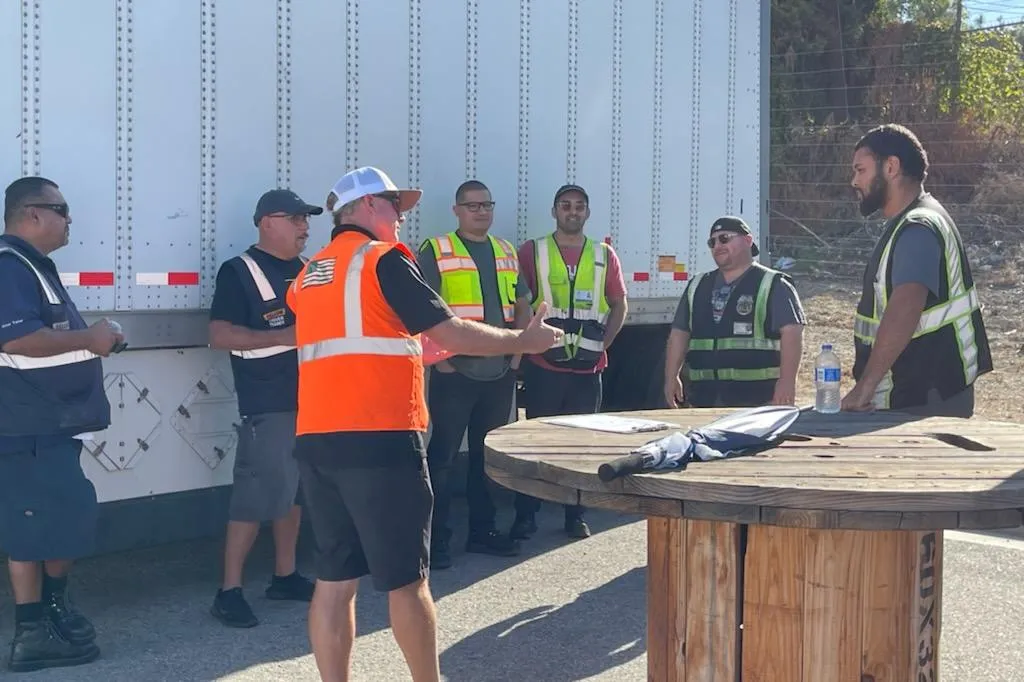Editor’s Note: Filling the Driver’s Seat is a series delving into fleets’ driver recruitment and retention strategies from the lens of the people leading the efforts. Know someone we should profile? Email [email protected].
If Yellow reaches its goal of training 1,000 new drivers by the end of the year, the LTL carrier will have Rich Frazer and his fellow certified safety trainers to thank.
Frazer, one of Yellow’s 850 safety trainers, spends every other week providing new hires with on-the-job training so they’re prepared to hit the road. When he’s not teaching, he typically drives 570 miles round trip each night from Joliet, Illinois, to Toledo, Ohio, to switch loads with another driver from Knoxville, Tennessee.
“There's more to driving a truck than just hanging onto the steering wheel,” said Frazer, who has 31 years of truck driving experience. “There's just so much safety stuff that we've got to instill into these people.”
Strategies: Adding trainers and academies, offering ‘earn-to-learn’ enrollment
Yellow is confronting labor challenges in the industry by expanding its private driver training academy network. The LTL carrier, which used to train drivers through four different operating companies, brought the process in-house in 2021.
Yellow added eight training academies this year for a total of 22, and it expects to open three more before the end of next year. The additional 200 safety trainers certified in the past year have helped the carrier approach its end-of-year recruitment goal: about 700 drivers have graduated so far this year.
The carrier now offers tuition-free, earn-to-learn paid enrollment, said operations safety manager Shane Smith, who oversees more than a dozen of the academies. In addition to its safety trainers, who teach on-the-road skills, the company employs about 50 instructors who help students prepare for their CDL tests.
“We have a capacity of about 150 seats per month to give the students plenty of accessibility and availability to get into a class,” Smith said.

Preaching patience and building confidence
Yellow requires drivers to complete 160 hours of hands-on training in a driving academy before getting their CDL. Then, drivers must complete another 160 hours of on-the-job training, known as “finishing school,” with a certified safety trainer before the company hands them the keys and allows them to haul loads.
As a trainer, Frazer preaches the virtue of patience on the road above all else. It’s how he’s driven nearly 3 million accident-free miles.
Frazer often asks his students to repeat explanations back to him to ensure they’ve absorbed the information, and he won’t let them in the truck until they’ve completed a pre-trip check on the vehicle.
“Safety's everything out here,” Frazer said. “We all want to come home to our families safely, and that starts before we even get into the truck.”
Watching drivers build confidence under his instruction is the most fulfilling part of the job for Frazer.
“When I see that light bulb come on in a student and teach them how to drive, it gives me a big sense of accomplishment,” he said. “It’s why I do it.”
Routing drivers — and others — to careers in trucking
Yellow pays students $17.50 per hour during training, and beginning driver salaries range from $65,000 to $75,000. To boost retention, fleet managers have stepped up their engagement with drivers, working with them on career development plans, according to Smith.
But tackling the broader labor challenges across the trucking industry requires carriers to redouble their efforts to publicize the benefits and opportunities available to freight transportation workers beyond just drivers, Frazer said.
“We need drivers, but there's so much more that I think people don't understand that this industry has to offer, whether it's in a supervisory position or being a dockworker or in management or a clerk in the office,” Frazer said. “We need to be a little bit better at getting the word out.”














